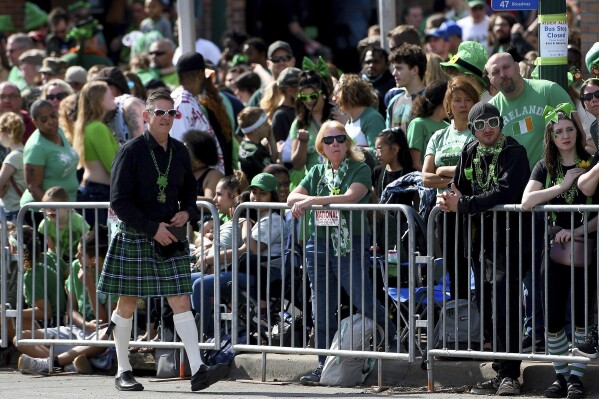Facts about straw purchases of weapons, and what’s being done to stop them
ST. LOUIS (AP) — It’s a scenario that plays out over and over again at American crime scenes: The investigation reveals that the shooter didn’t get his firearm legally from a store or gun show, but instead obtained it from someone who did.
It’s known as a straw purchase. A federal law signed in 2022 takes aim at the practice, and federal investigators have made it a priority to combat it. Those caught can face lengthy prison sentences. But despite that, evidence suggests straw purchases are becoming even more problematic.
HOW DOES A STRAW PURCHASE WORK?
The Bureau of Alcohol, Tobacco, Firearms and Explosives defines a straw purchase as buying a firearm for someone who is prohibited by law from possessing one, or for someone who doesn’t want their name associated with it. Weapons bought through straw purchases sometimes end up in the hands of convicted felons, or minors.
A federal report released in February 2023 showed that 54% of guns that police recovered at crime scenes in 2021 had been purchased within three years, a double-digit increase since 2019. The quicker turnaround can indicate illegal gun trafficking or a straw purchase. The increase was driven largely by guns bought less than a year before, the report stated.
WHAT IS THE BIDEN ADMINISTRATION DOING TO COMBAT STRAW PURCHASES?



In 2022, President Joe Biden signed the Bipartisan Safer Communities Act, a measure spurred in part by mass shootings including the massacre of 19 students and two teachers at an elementary school in Uvalde, Texas.
The law made it a federal crime to traffic in firearms. It also created stronger penalties for straw purchases — up to a 25-year prison sentence if the weapon is used in an act of terrorism, or while drug trafficking.
Meanwhile, the Department of Justice said it is has invested resources to investigate and prosecute violations involving firearms trafficking and straw purchases. The agency’s website says it has charged more than 60 people for violations since the law was passed and seized hundreds of firearms in connection with those cases.
WHAT ARE SOME RECENT CASES INVOLVING STRAW PURCHASES?
Straw purchases were at the center of two cases announced this week.
Three men in Kansas City, Missouri, were charged with federal counts related to the illegal purchase of high-powered rifles and guns with extended magazines. Two of the guns were connected to last month’s shooting at the Kansas City Chiefs’ Super Bowl parade and rallly, authorities said Wednesday.
The complaints do not allege that the men were among the shooters. Instead, they are accused of involvement in straw purchases and trafficking firearms, including guns used in the Feb. 14 shooting at the Chiefs’ rally that killed a woman and wounded nearly two dozen others, including children.
One weapon recovered at the scene was a loaded Anderson Manufacturing AM-15 .223-caliber pistol. According to an affadavit, one of the suspects bought the AM-15 from a gun store and illegally trafficked many others.
Also recovered at the scene was a Stag Arms .300-caliber pistol that the complaint said was purchased by another suspect at a gun show in November. Prosecutors said that man gave the gun to the third suspect, who was too young to legally purchase one himself.
“Stopping straw buyers and preventing illegal firearms trafficking is our first line of defense against gun violence,” U.S. Attorney Teresa Moore said in announcing the charges.
On Thursday, authorities in Minnesota announced charges against a woman accused of buying guns used in the killings of three first responders last month at a home in the Minneapolis suburb of Burnsville.
The woman conspired with the shooter, Shannon Gooden, to illegally get him guns, U.S. Attorney Andrew M. Luger alleged at a news conference. Officers Paul Elmstrand and Matthew Ruge, both 27, and firefighter-paramedic Adam Finseth, 40, were slain during a standoff. Gooden then killed himself.
Dakota County Attorney Kathryn Keena called the woman “the reason he had an arsenal of firearms in his possession that ultimately resulted in the murder of three of Dakota County’s finest.”
Disclaimer: The copyright of this article belongs to the original author. Reposting this article is solely for the purpose of information dissemination and does not constitute any investment advice. If there is any infringement, please contact us immediately. We will make corrections or deletions as necessary. Thank you.




